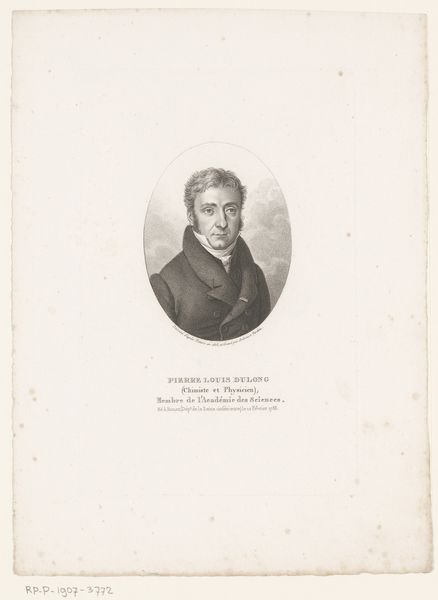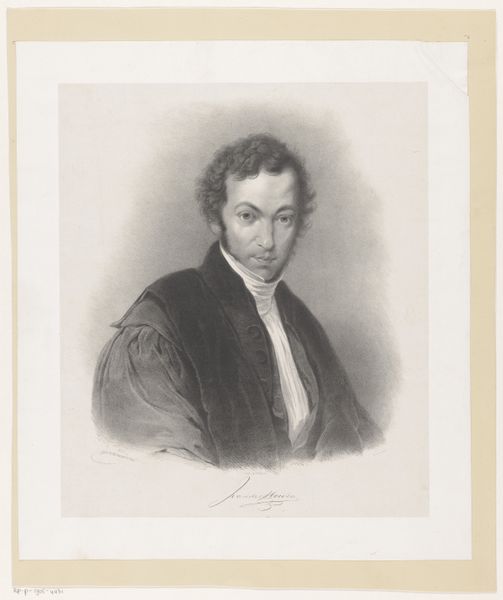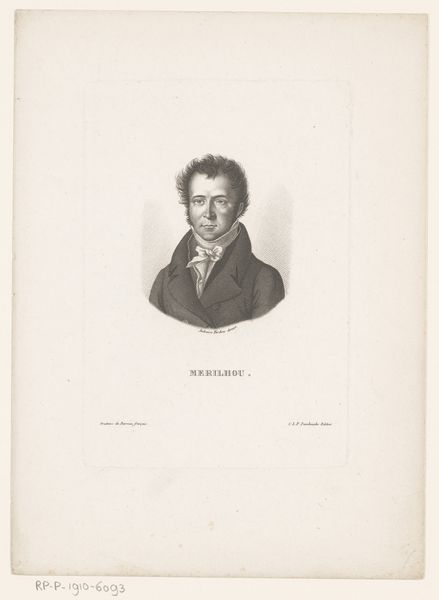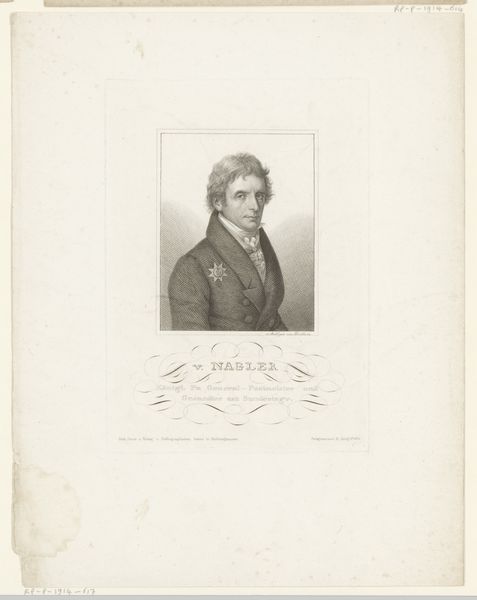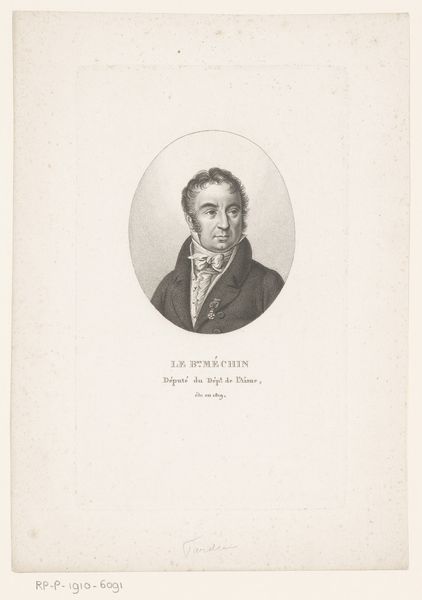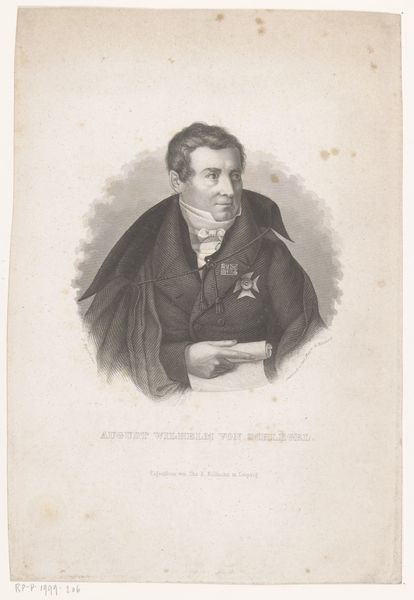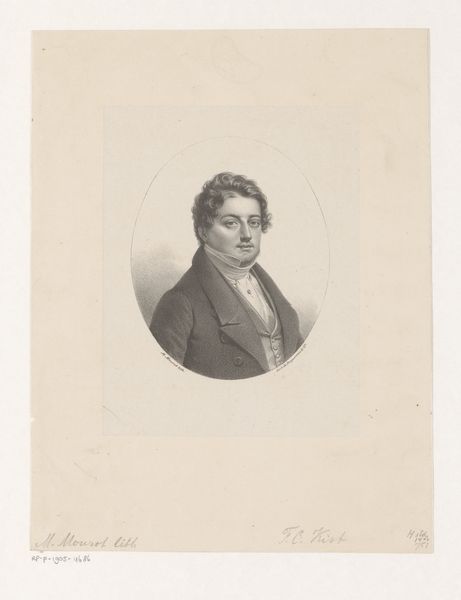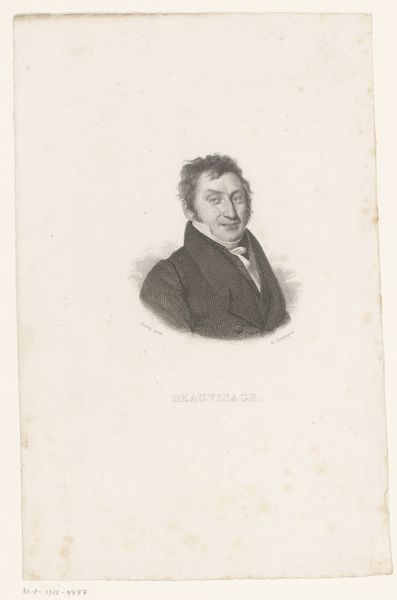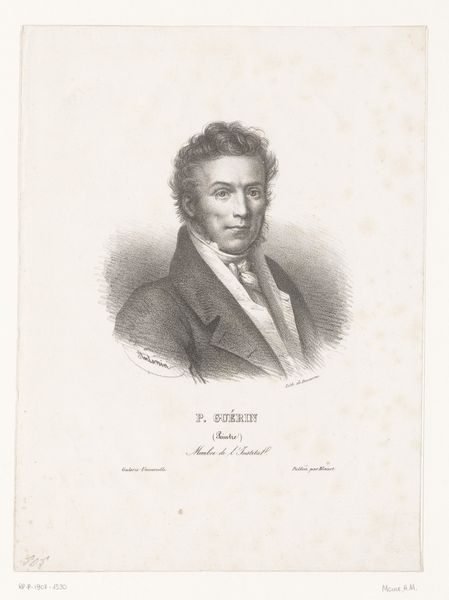
drawing, print, graphite, engraving
#
portrait
#
drawing
# print
#
figuration
#
pencil drawing
#
romanticism
#
graphite
#
engraving
Dimensions: height 488 mm, width 346 mm
Copyright: Rijks Museum: Open Domain
Editor: Here we have Prosper Ferdinand Heyse's "Portrait of N.J. Wetrens," made sometime between 1822 and 1845. It's an engraving, seemingly based on a graphite drawing, so it's a study in greyscale. What stands out to me is the level of detail achieved with what seems like fairly simple materials. What are your thoughts when you look at this work? Curator: I notice first the process. Engraving allowed for reproduction, a dissemination of the image on a scale previously unavailable. It democratizes art. Consider too, the status of portraiture in the 19th century, before widespread photography. It's a commodity; an indication of wealth and social standing made somewhat more accessible by the relative ease and lower cost of printmaking. Editor: So you're saying this print provided broader access to portraiture? It's like a Victorian-era profile picture! Curator: Precisely. But consider the artist's labor. This wasn't mass production as we know it today. Each print still required skill, time, a trained hand carefully translating the original drawing onto a plate, and someone printing. And, whose portrait is worthy of being engraved? What societal forces grant that power? Editor: The sitter looks rather affluent and professional. Also, I wonder what determined the size of the print run? Supply and demand, or a pre-determined number? Curator: Exactly! Economic realities heavily shaped artistic production. It prompts us to consider both the economics and the social standing indicated here by the artistic choices. Was it commissioned? Who purchased it? How does the act of reproducing this image alter its intrinsic worth? It asks: what are the power structures at play? Editor: Thinking about it as a physical object, produced through a specific process… that shifts my understanding completely. It's not *just* a picture; it's a product of its time. Curator: And those production details – the labour, the distribution – reveal the power structures behind the image itself.
Comments
No comments
Be the first to comment and join the conversation on the ultimate creative platform.
